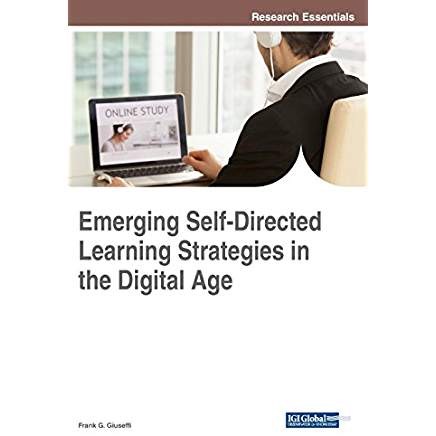self-directed learning
Select an item by clicking its checkbox
Date Reviewed: April 15, 2020
Emerging Self-Directed Learning Strategies in the Digital Age (2018) edited by Frank Giuseffi is one of the volumes among the Advances in Educational Technologies and Instructional Design Book Series. In the preface, Giuseffi acknowledges that self-directed learning (SDL) is not a new concept. Yet, twenty-first century technology continues to transform the platforms of SDL. His desire is to highlight the importance of self-directed learning in today’s teaching-learning environment. With each chapter written by a different scholar (or group of scholars), the reader is exposed to a number of strategies useful among multiple teaching-learning platforms to foster self-directed learning with the desired outcome of promoting student success and greater teacher–student engagement.
The text is organized into eight chapters, with each chapter addressing a specific SDL platform or process. Included among the topics: online learning, an android-based mobile application for students to monitor their performance via grade point average, Massive Open Online Courses and their applicability to technical and vocational education and training in developing countries, non-mandatory employee training, the necessity of self-motivation among doctoral students to complete their dissertation (built upon Malcolm Knowles’s andragogical assumptions), cultural influences on self-directed language learning, the relationship between metacognition and knowledge transfer along with critical thinking and SDL, and teachers’ use of digitally based SDL strategies to employ essential questions to nurture the students’ critical thinking skills. While the editor’s goal may have been to provide a wide range of scenarios for the engagement of self-directed learning, chapter 4, addressing employee training and the organization’s responsibility for offering the training, seemed out of place. Job training is not germane to the discussion of SDL in the academic setting or specific teaching-learning platform or process.
All eight chapters in the text are well researched, referencing pertinent studies and pedagogical principles. Two of the chapters share specific research conducted on the phenomenon addressed. Chapter 5 (“The Intersection of Andragogy and Dissertation Writing”) outlines the mixed methods study conducted by a doctoral student exploring the dissertation completion process. Dissertation chairs and doctoral students in the dissertation-writing phase will find this chapter insightful. Chapter 8 (“Transformational Shifts of Pedagogy Through Professional Development, Essential Questions, and Self-Directed Learning”) describes a year-long case study of professional development among teachers and their use of digital technology in designing essential questions targeting critical thinking among students. Though the emphasis of the research was on the subjects of math and reading, the reader will gain information on how to use questions to help develop critical thinking skills among students.
The layout of the book lends itself to use as a reference guide. Each chapter begins with an abstract succinctly stating the purpose of the chapter and relevance to SDL. The chapters end with a concluding paragraph reiterating the thesis and main tenets shared. Finally, you will find a list of pertinent references for further study. Our goal as educators is to help our students become self-directed learners. This text will broaden your understanding of how to use today’s technology to help in this quest.
Time and time again, I find that successful online students are those with skills of self-direction, self-regulation, and time-management. Self-directed learners determine their learning needs, set learning goals, locate and access suitable resources for learning, manage their learning activities, monitor and evaluate their performance, and reflect on and reassess their ...

